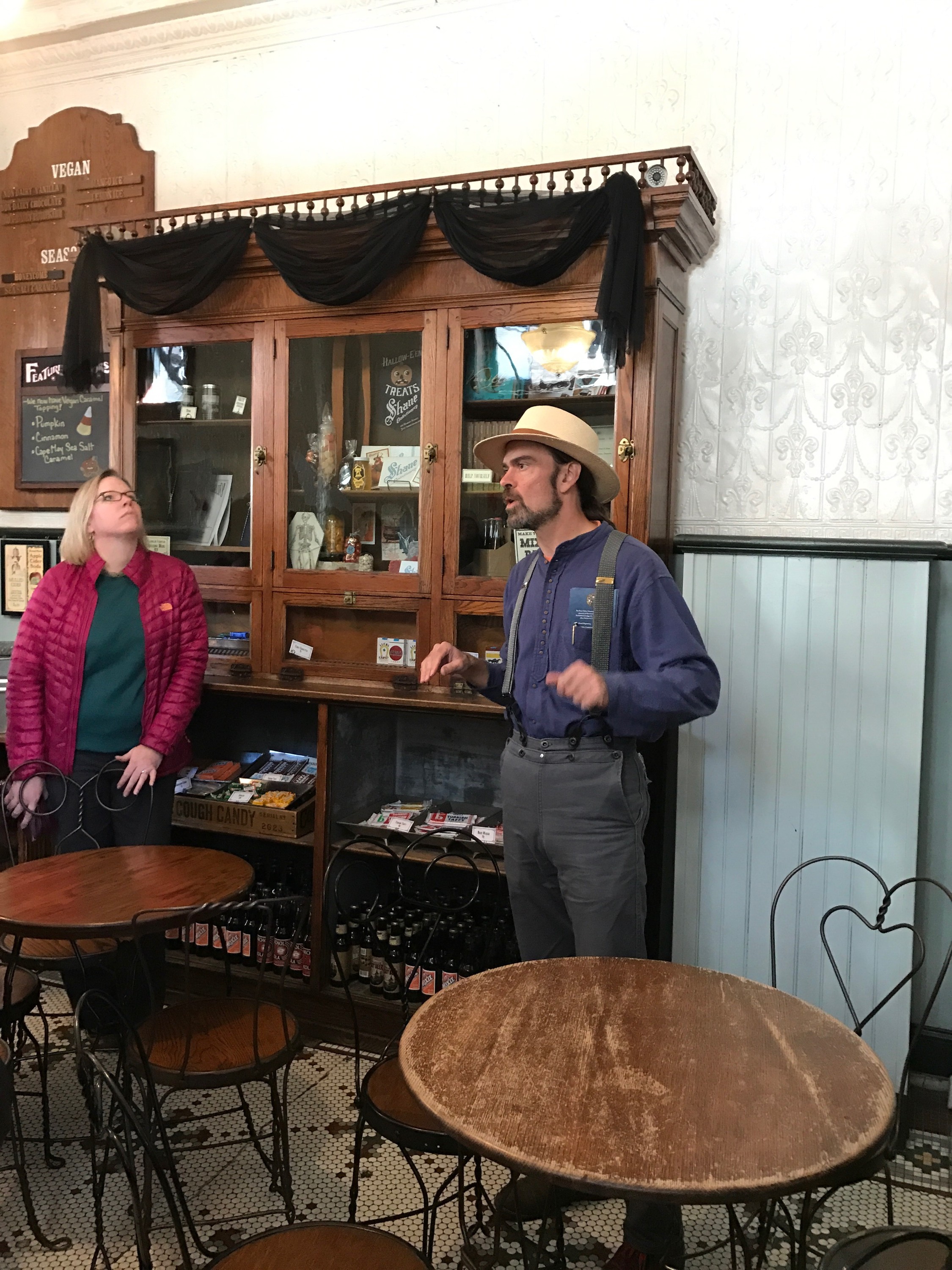Sweet Escape: A Trip to the Franklin Fountain and Shane Confectionary
Lest you think our field trips consist only of art museums and historic houses (though, no complaints here on either front), today’s blog post follows one of our more unusual stops: a trip to the Franklin Fountain and Shane Confectionary in Philadelphia. Assistant Professor, Catharine Dann Roeber, took her American Interiors class to the two shops in mid-October. They prompted us to think about how historic spaces can be transformed, rehabilitated and reimagined for modern usage.
Both the Franklin Fountain and Shane Confectionary are the brainchildren of brothers Ryan and Eric Berley. The brothers grew up and worked in the antiques business, however, both knew they wanted to apply their love of objects in a creative, entrepreneurial direction. Their idea for the Franklin Fountain began when the family purchased a turn-of-century space on market street. Despite its current iteration as an adult-themed bakery, they noticed original tin ceilings and porcelain-tiled floors, sparking an idea to establish an early twentieth century soda fountain. In this case, the space, itself, was a major factor in its eventual use.
The Franklin Fountain’s façade. The upper stories are currently used as office space for the expanding business.
On the left is their extensive list of homemade ice cream flavors.
Over the next few years, the brothers brought their dream to life, learning traditional ice cream-making techniques and collecting the ephemera which would fill their walls and inspire their creations. Today, the business is a popular Philadelphia destination, observing a line which snakes down the block during the summer. Their success prompted the brothers to buy a space a few doors down and revive a confectionary shop of the same era, now known as Shane Confectionary.
Inside the Franklin Fountain
While touring both spaces, Ryan Berley explained the complications of maintaining a historic space with modern commercial standards. Air conditioning, a restroom, and multiple kitchen sanitation measures have been installed, in some cases at the cost of original structural details, but always cleverly disguised (note the column behind Ryan in the image above, hiding an HVAC system).
The shop attempts to renew traditional and varied soda fountain treats, such as phosphates and egg creams. An ever-growing collection of period ephemera and recipe books have inspired the revival of such forgotten specialties as the Japanese Thirst Killer phosphate, a tempting concoction of grape juice, angostura bitters and orgeat almond syrup. Berley did mention, however, that the shop must also cater to modern tastes and expectations, which have significantly changed as the American sweet tooth has grown alongside the capacity for large-scale refrigeration. The multi-scoop sundae covered in an array of toppings, for example, is a more recent mode of ice cream consumption.
A display case inside Shane Confectionary
A visit to the Shane Confectionary was equally fascinating. Again, the Berley brothers have revived a turn-of-the-century sweets business in an original building, which had long held the Shane family candy-making company. Paying homage to the building’s long history, they kept “Shane” in their name.

The interior of the shop is a feast for the eyes and stomach.
In the back, a drinking chocolate station.
Upstairs, we toured the kitchens. The confectioners combine both old techniques and the use of new equipment to meet the demands of their customer base.
Rows upon rows of sugar candy molds, purchased from collections all around the country.
A bit of cooling caramel and a model of a sugar candy statue in the shape of a rabbit.
Our visit to the Franklin Fountain and Shane Confectionary provided a rare and exciting glimpse at how history can be revived and adapted for a modern audience (and palette). The Berley brothers do not simply appropriate an old fashioned aesthetic for the sake of commercial appeal. Their clear interest in, and willingness to experiment with, historical foodways has created a thoroughly fascinating array of products set in engaging interiors, which the historically-inclined visitor will surely enjoy.
By Lan Morgan, WPAMC 2017









Leave a Reply